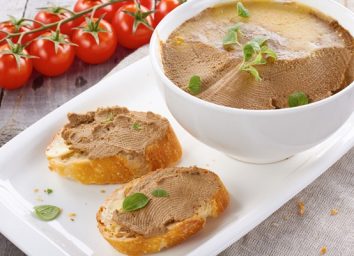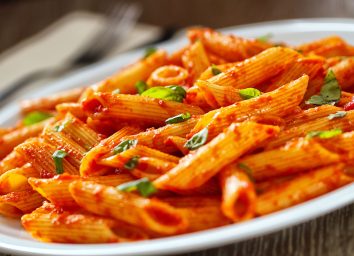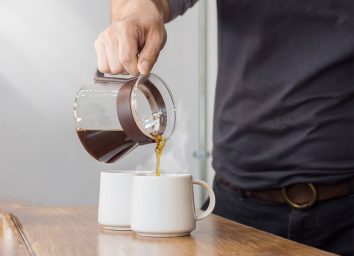15 Mistakes You Make While Cooking Salmon
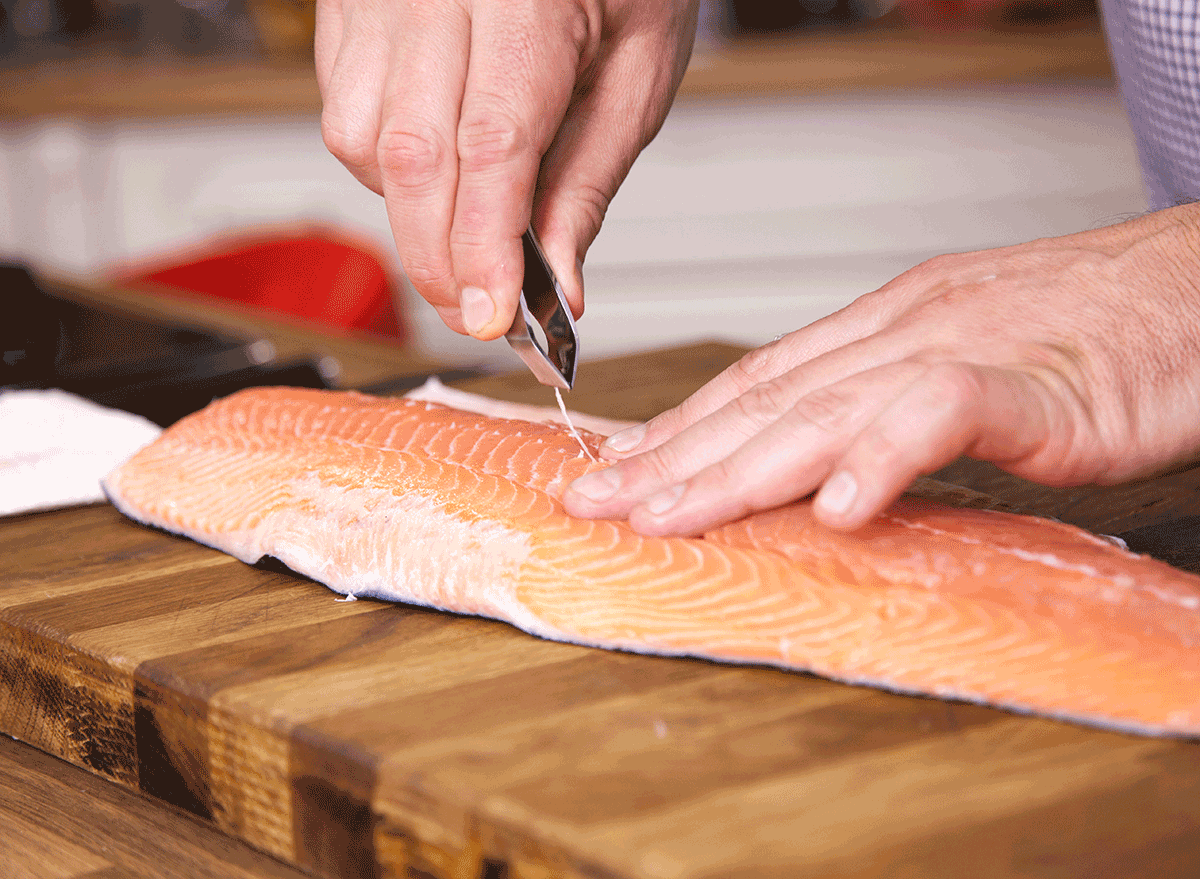
The typical American consumes about 2.4 pounds of salmon per year, making it one of the most popular seafoods in the country. But while it may be beloved, that doesn't necessarily mean we're preparing that pretty pink protein perfectly. And there's no time like the present to right our wrongs. We've talked to chefs and culinary professionals for the ultimate tips and tricks on avoiding frequent cooking mistakes when it comes to this particular fish. So, it's time to learn the most common mistakes you make while cooking salmon—and exactly how to fix them.
Mistake: Shopping at the wrong place.
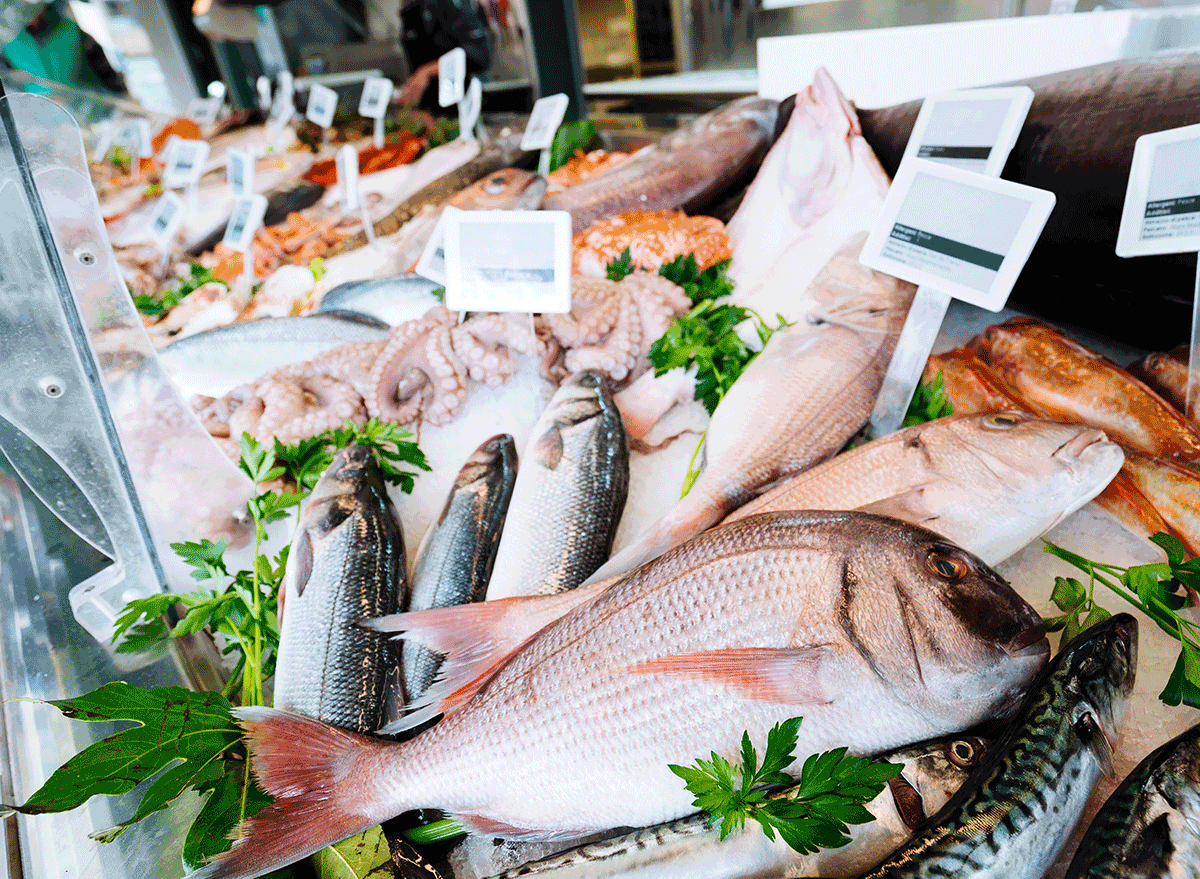
The supermarket is stellar for stocking up on pantry staples, but you'll want to swing by a specialty market for the freshest catches.
"Go to a fish market or even a butcher shop to find the best quality," suggests Matthew Voskuil, executive chef and director of food and beverage at Cara in Newport, Rhode Island. "Don't be afraid to ask the vendor where the fish came from."
Additionally, you don't want to put too much weight on how the salmon looks. "The color of the fish varies greatly depending on the species—and even individual fish—and should not necessarily be used as an indicator of quality," explains Simon Vine, chef at Mountain Trek in Nelson, British Columbia. "The best thing to do is to get to know your local fishmonger and ask him or her what's good."
Mistake: Not using your nose.
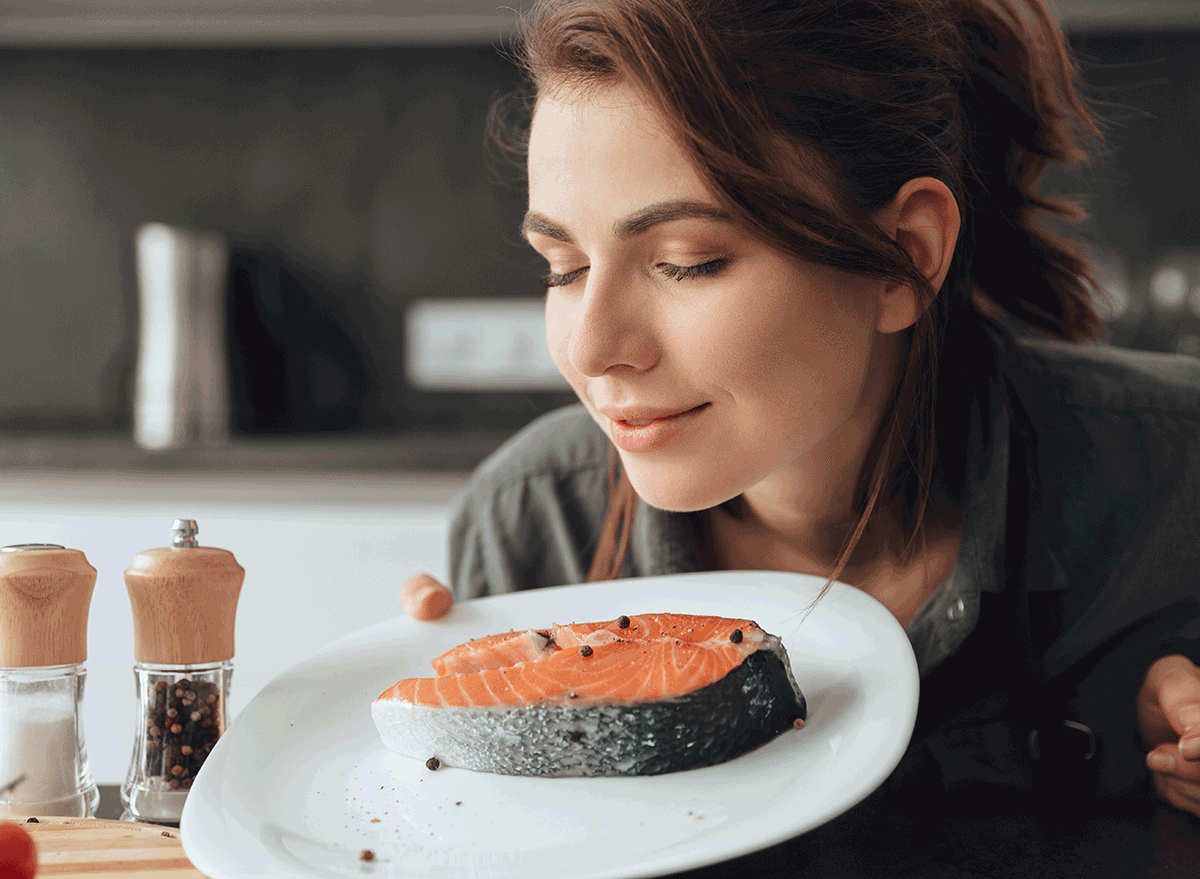
Salmon comes from the sea, and it should smell like it. However, it shouldn't smell fishy—nor should the place you buy it from.
"The store, and the fish in it, should smell like the sea, not fishy or sour," says Dan Zuccarello, executive food editor at America's Test Kitchen in Boston, Massachusetts. "All the fish should be on ice or properly refrigerated. Fillets and steaks should look bright, shiny, and firm."
Mistake: Opting for frozen.
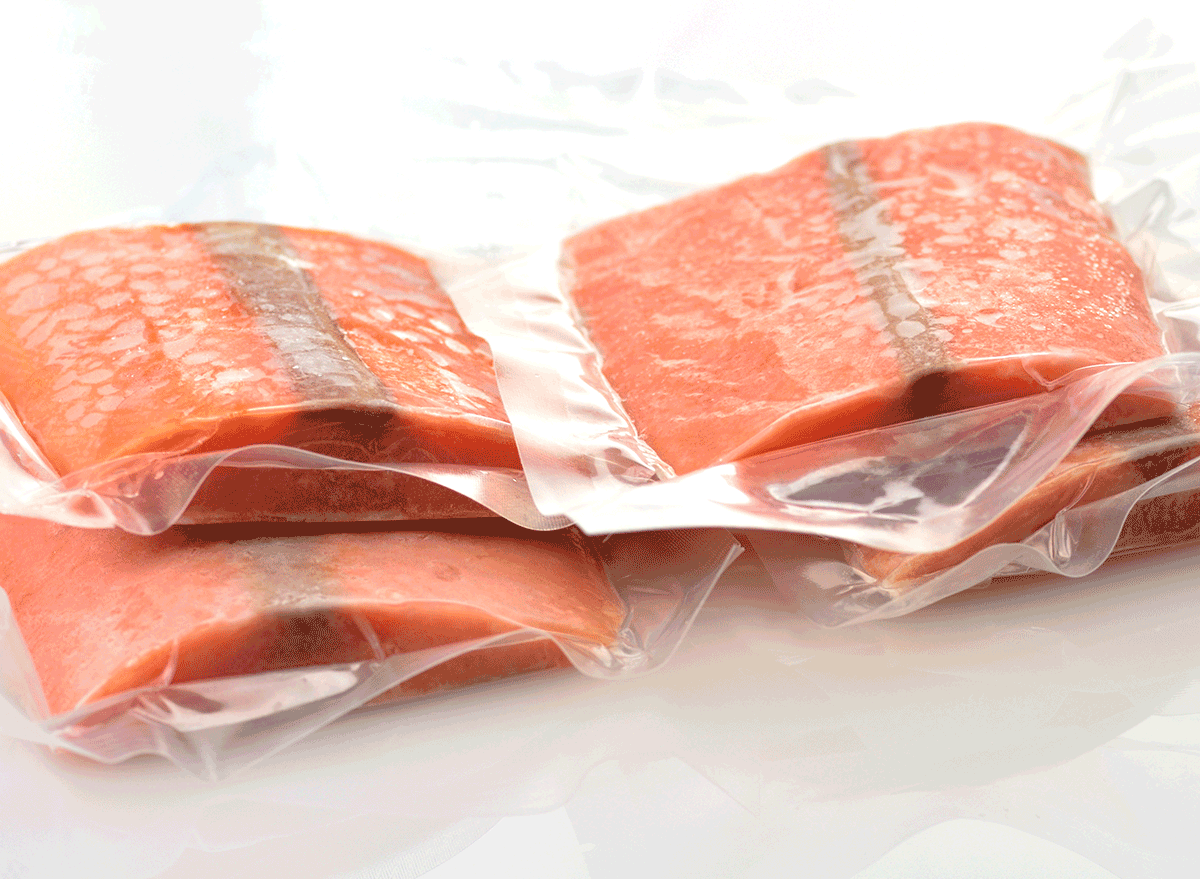
When it comes to salmon, fresher really is better, according to the experts.
"Avoid frozen, previously frozen, or 're-freshed' fish," Vine says. Freezing it pulls the moisture out of the fish and can make it mushier in texture.
Mistake: Choosing a pre-cut fillet.
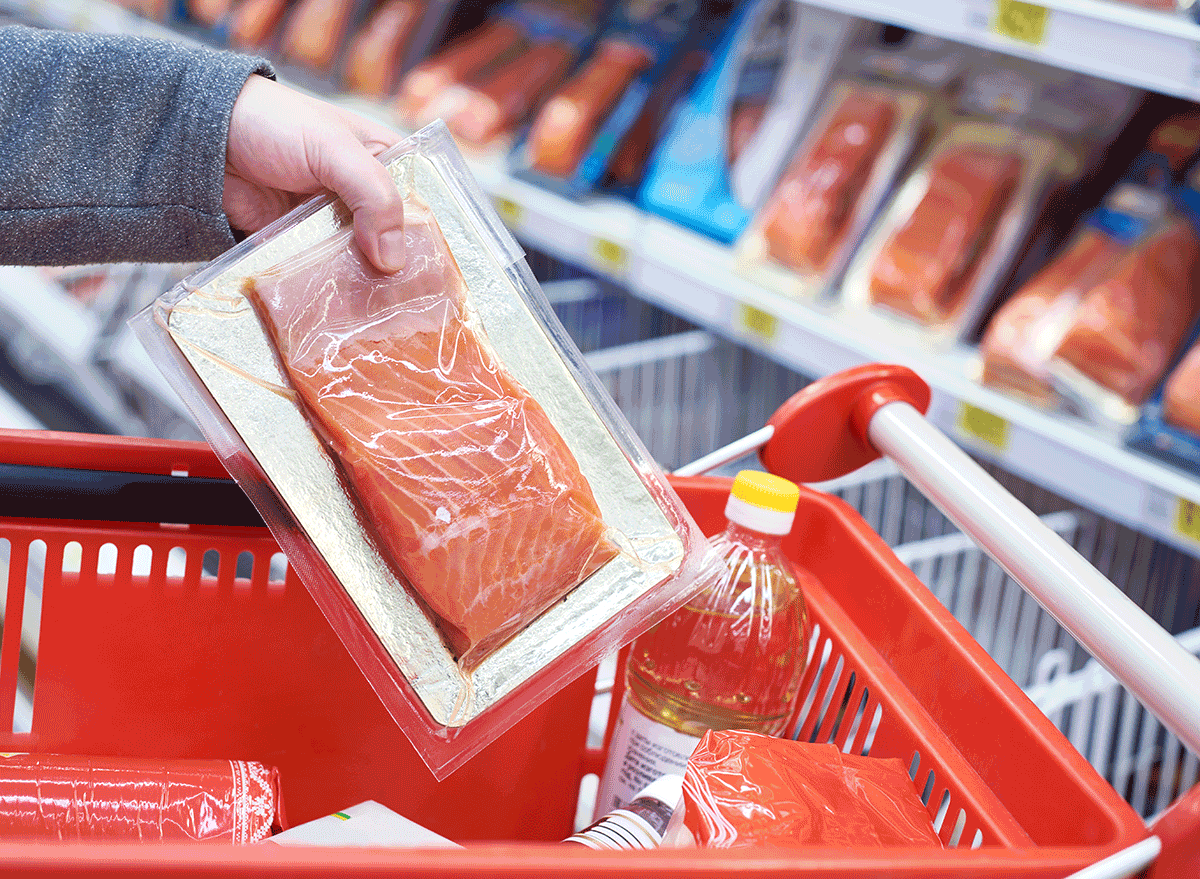
The "whole foods are best" mindset applies to salmon, too. Pre-cut fillets tend to be uneven in shape and size, explains Zuccarello, which makes it easier to over- or undercook portions of your fish.
"If you can, purchase a whole fish as often as possible," Voskuil says. "Cleaning fish is easy, and salmon is one of the simplest fishes to break down."
If you don't want to invest in a whole fish, Zuccarello and his America's Test Kitchen co-workers suggest a whole center-cut fillet. "To ensure uniform pieces of salmon that cook at the same rate, we prefer that cut (about 1 1/2 pounds) and slice it into four portions ourselves," he says.
Mistake: Storing your salmon improperly.
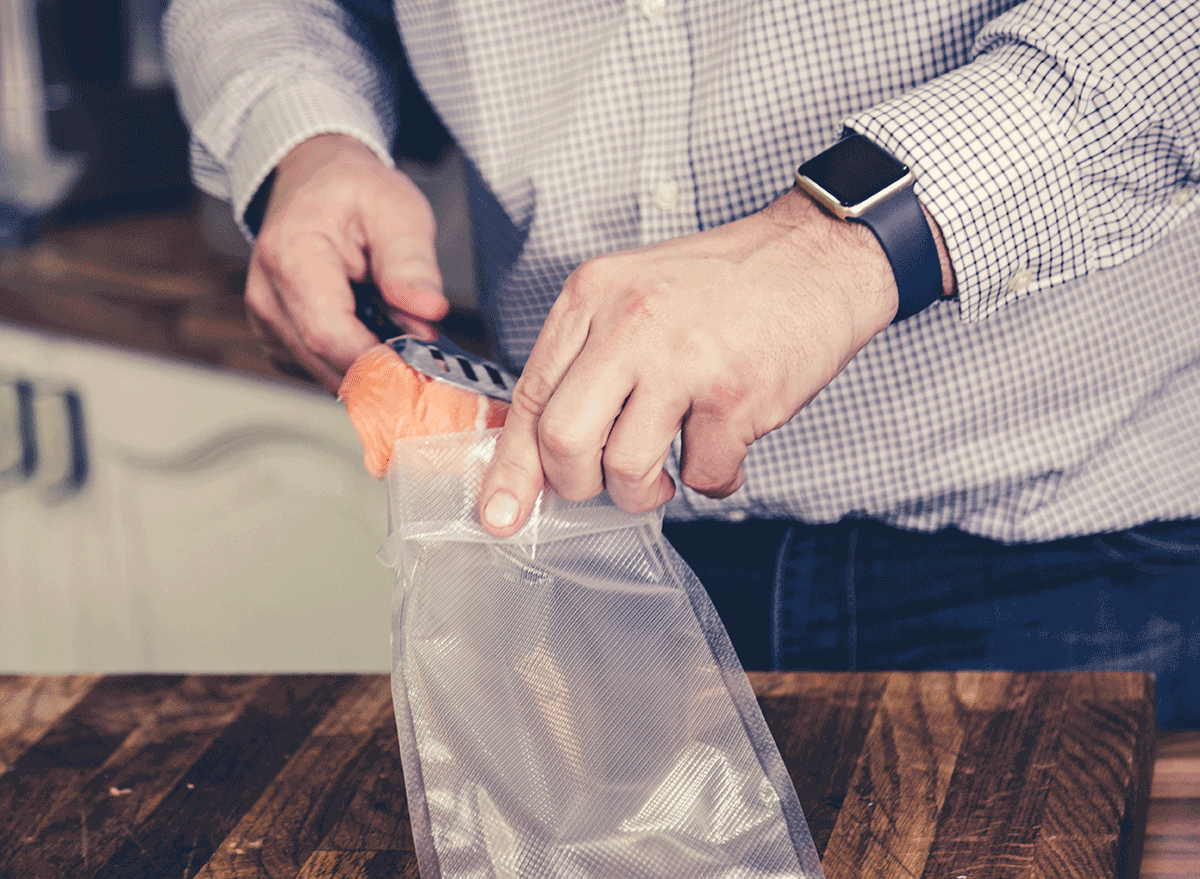
Once you've "caught" your even cuts of salmon, be sure to store it carefully.
If you're not using the salmon the same day you buy it, you can follow Zuccarello's storage suggestion:
- Unwrap the fish.
- Pat it dry.
- Put it in a zip-top bag.
- Press out the air.
- Seal the bag.
From there, "set the fish on a bed of ice in a bowl or container, and place it in the back of the fridge—where it's coldest," he says. "If the ice melts before you use the fish, replenish it. The fish should keep for one day."
Mistake: Ignoring what species of salmon you're making.
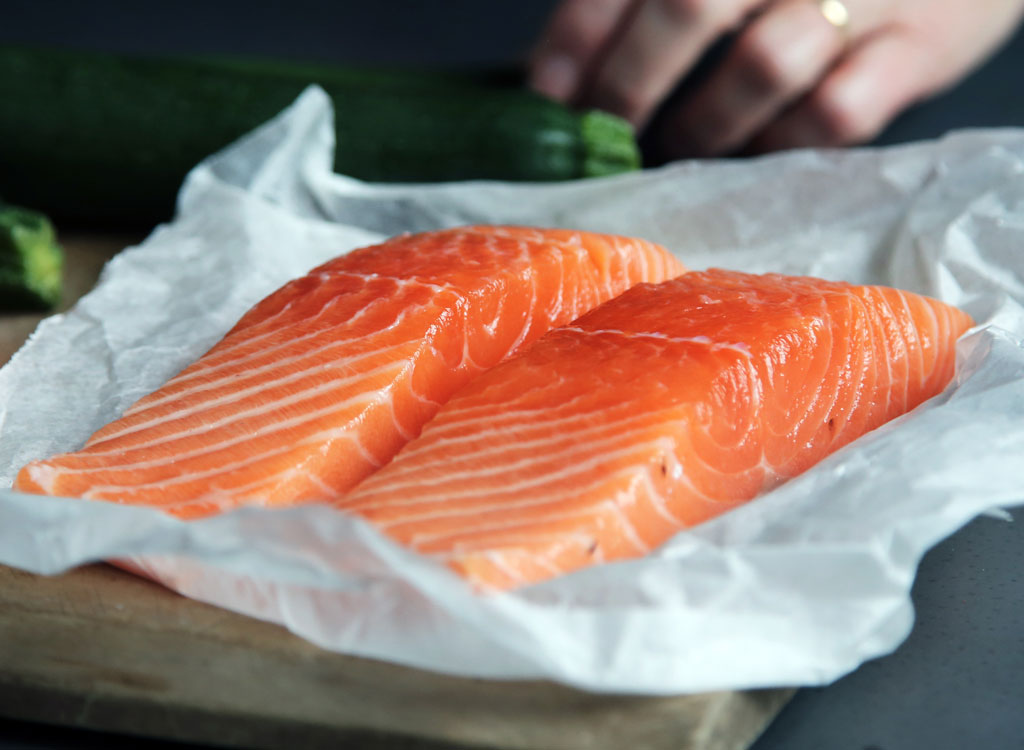
Many people don't realize that Atlantic and Pacific salmons—the latter of which includes sockeye, coho, and Chinook (also called king)—have different flavors and fat content.
"Most Pacific salmon sold in this country is wild-caught in the American Northwest, British Columbia, and Alaska and has a more assertive flavor and a lower fat content than farmed Atlantic salmon," Zuccarello says.
Depending on the recipe, certain species work better than others, Vine notes. So, study up on the various fat levels of salmon species, then follow his preparation guide:
- Sockeye and other lower-fat salmon taste best after being marinated and prepared with a gentle, slow cooking method (like sous vide).
- Chinook, spring, and king salmons are all great for grilling because their fillets tend to be thick and higher in fat.
- Chum is best canned or smoked.
Mistake: Bypassing the bones.
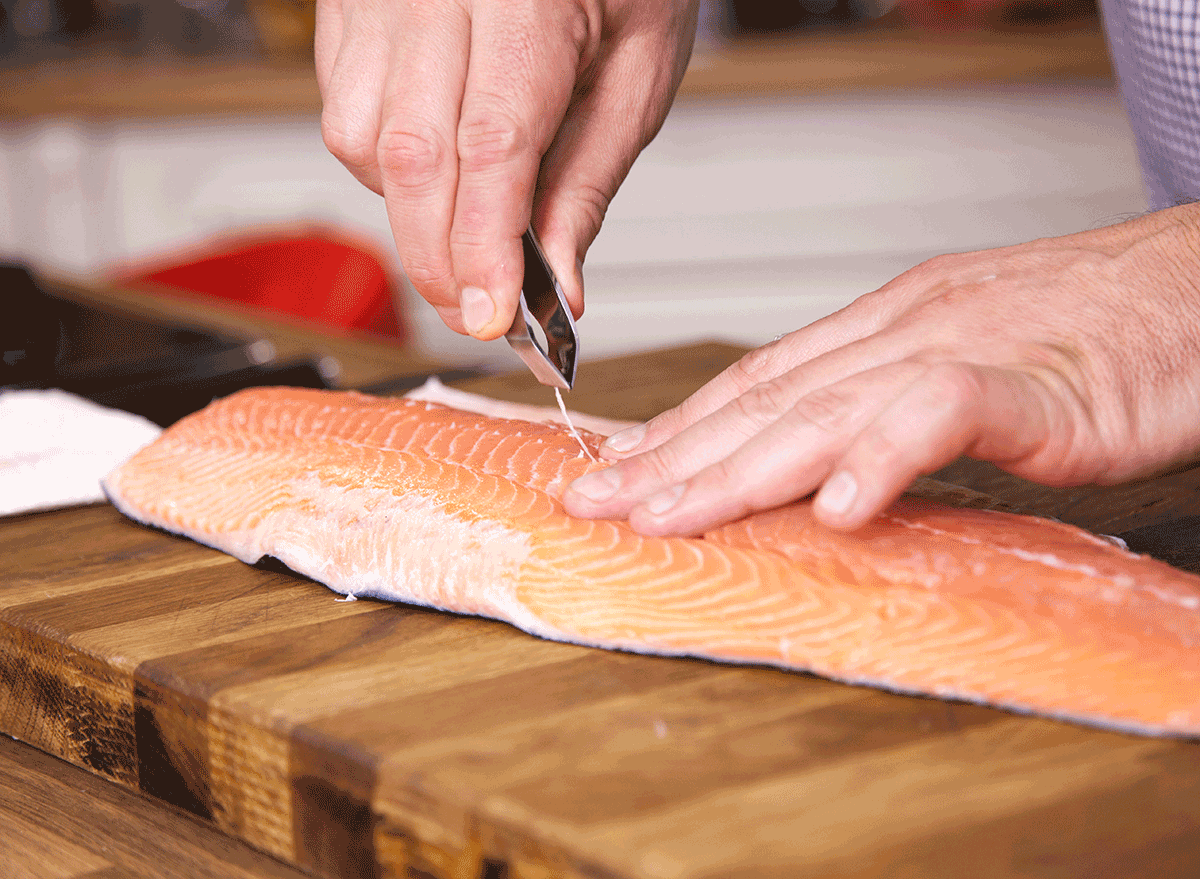
There should be no bones about it when it comes to your salmon supper. But if you don't inspect your protein, you may find some pin bones in your fillet.
"A lot of the salmon sold in markets already has these bones removed, but it's always a good idea to check," Zuccarello says.
"Drape the fish over an inverted bowl. Carefully grasp any protruding pin bones with needle-nose pliers or tweezers and pull to remove," he explains. "For fillets, run your fingers over the salmon's surface to locate pin bones—they feel like tiny bumps."
Mistake: Misusing the skin.
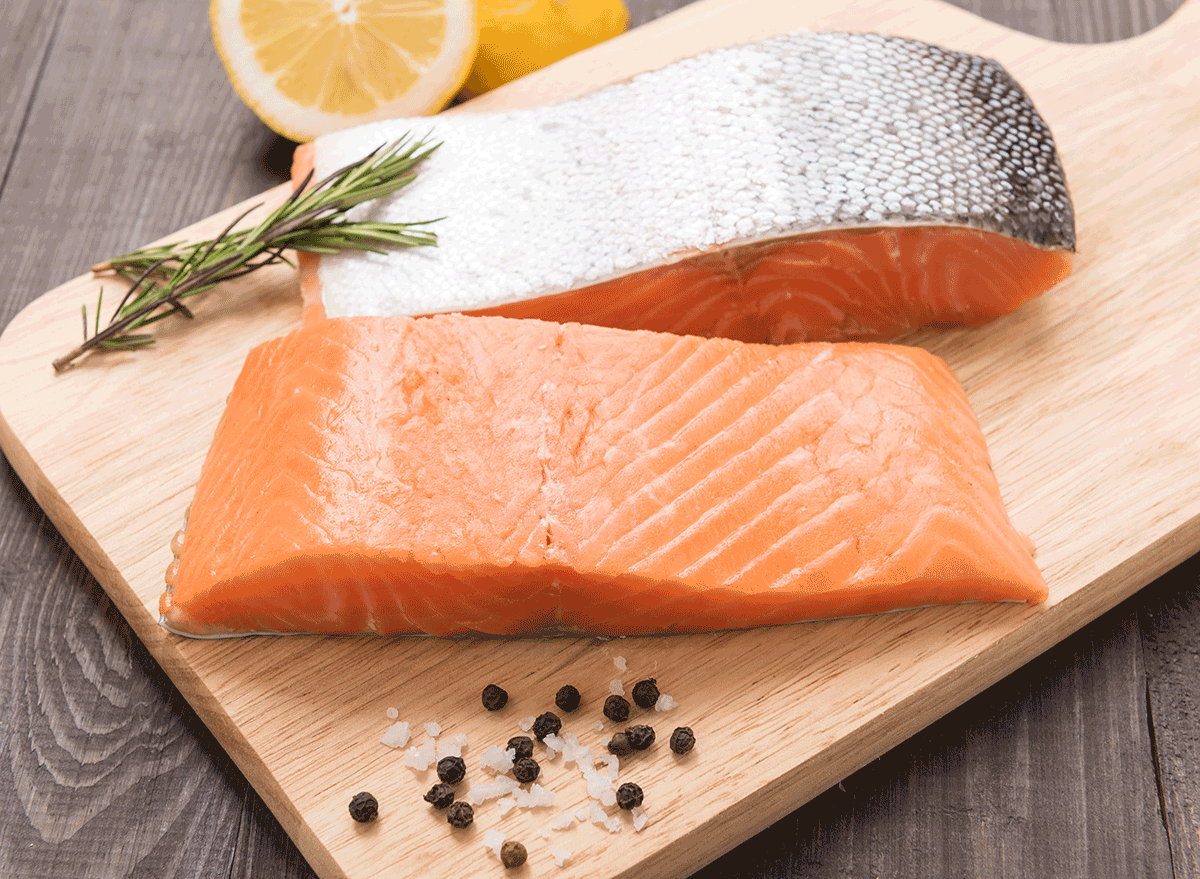
Don't shed your salmon's skin! It enhances the flavor and texture of your finished dish.
"The skin is tasty and provides a great layer between the meat and a hot pan or grill," says Matthew Nelson, executive chef at Mission Point Resort in Mackinac Island, Michigan.
However, that doesn't mean you should leave it as-is, either. "When searing, roasting, or even grilling salmon, the fillets will buckle slightly, causing them to lift off the cooking surface and brown unevenly," Zuccarello says. But by scoring the skin, you can avoid this common salmon mistake.
"Using a sharp or serrated knife, cut four or five shallow slashes diagonally, about one inch apart, through the skin of each piece of salmon, being careful not to cut into flesh," Zuccarello explains.
Then, cook it skin-side down "for no less than 85 percent of the time," Nelson says. "This will prevent you from overcooking the fish."
And finally, serve it skin-side up to keep it crispy—and to show off your beautiful scoring, of course.
Mistake: Not letting your salmon sit before cooking.
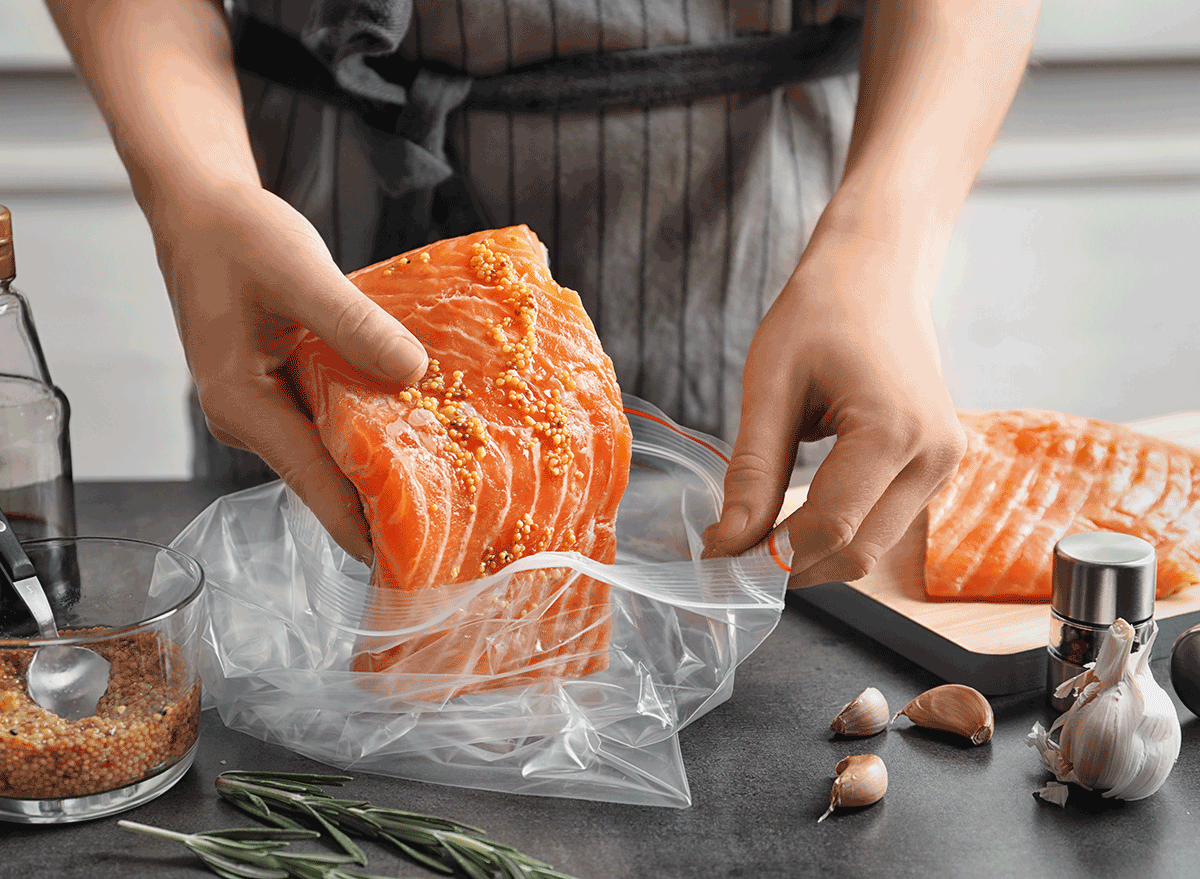
Before turning up the heat, give your fish some time to chill out outside of the fridge.
"Whatever cooking method you use, let the fish sit at room temperature for five to 10 minutes before putting it over a flame," Voskuil says. "Thicker fish will cook better if it's closer to room temperature before going into a pan or onto a grill."
By starting at a slightly-closer-to-room-temp, you can cook the fish for a shorter amount of time, which means you'll have moister salmon.
Mistake: Overcooking the fish.
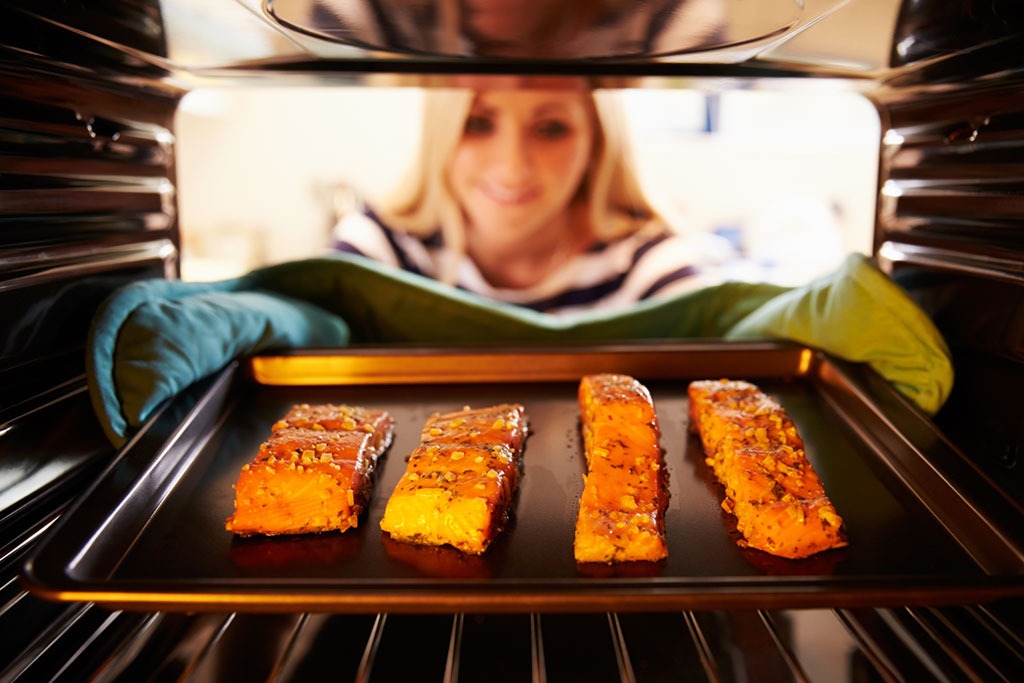
"This might just be the single most common mistake made with salmon," Vine says. "Some varieties are less susceptible to drying out and getting overcooked than others, but generally speaking, salmon should be cooked medium rare to medium, or 135°F to 145°F."
But that doesn't mean you should wait for your thermometer to read that number. Food continues to cook after it's been removed from the heat, so aim to remove it just slightly below the desired final temperature.
According to Zuccarello, remove your salmon when it registers "125°F (for farmed) or 120°F (for wild) in the thickest part, with the center still translucent."
Mistake: Forgetting the grilling basics.
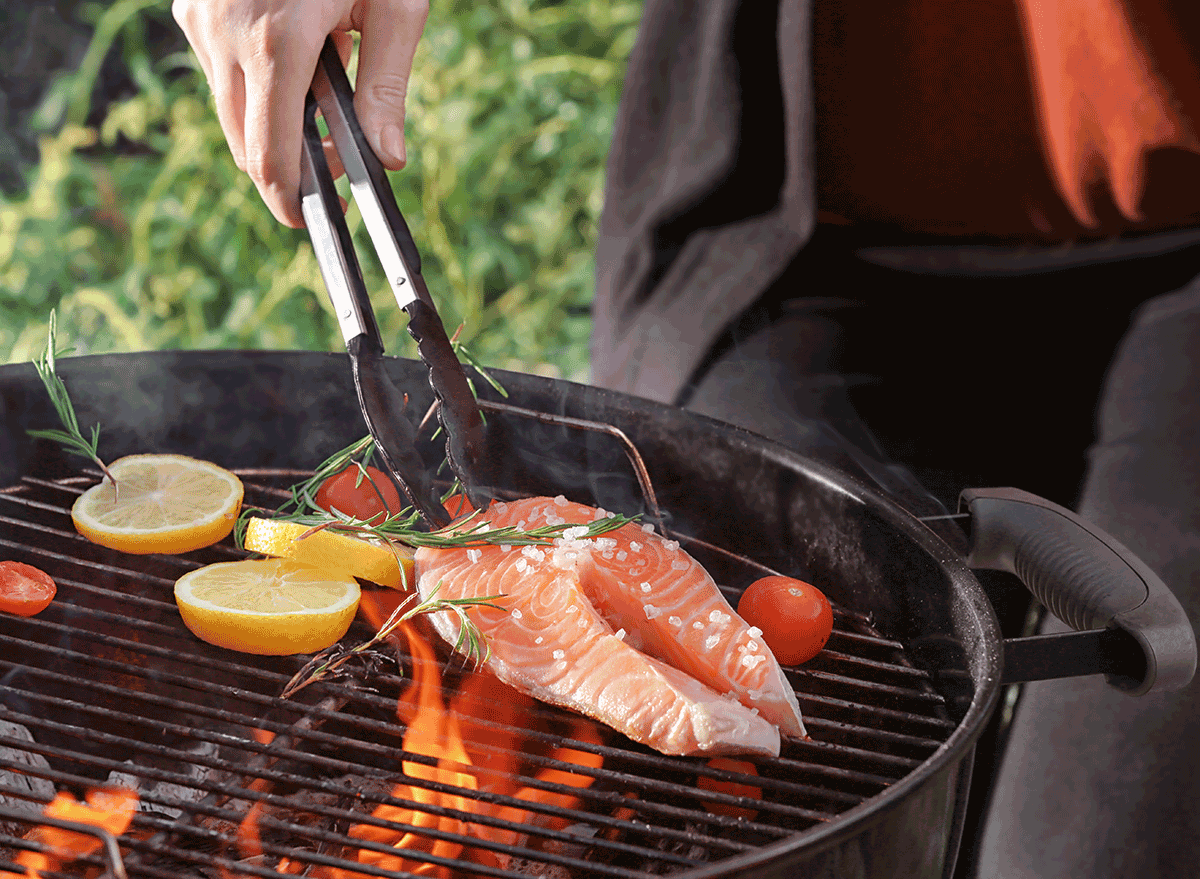
Grilling salmon should be a simple proposition, Nelson says. Don't overthink it, but if you're uncertain, follow this tested and true grilling advice from Zuccarello:
- Season just before cooking.
- Oil both sides of the salmon to promote browning and prevent sticking.
- Preheat the grill thoroughly over high heat. (This will help form a flavorful crust on the exterior of the fish that easily releases it from the cooking grate.)
- Clean and oil the grates; then oil again to make it as non-stick as possible.
- Place the fish perpendicular to the grates so the fillets will be less likely to break or tear when flipping.
- Flip the fillets by rolling to reduce the risk of the fillets breaking. Flip only once, if possible.
- Never lift them entirely off the grate until they're done.
Mistake: Not trying your hand at poaching.
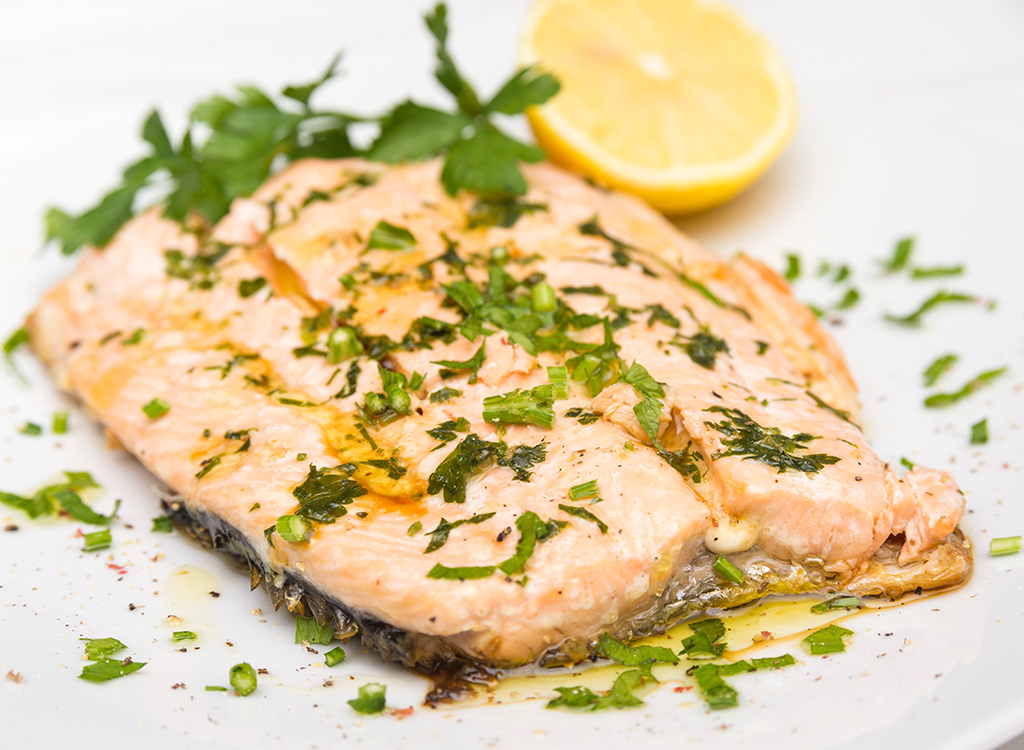
While poaching isn't the most popular method for cooking fish, it can be one of the most flavorful.
"For this method, it's important to build an aromatic poaching liquid. A classic broth with extra fennel and lemongrass can be used two or three times before you have to discard it," Voskuil says.
Or take your salmon on a trip to Asia by building a broth of soy sauce, ginger, sake, garlic, and brown sugar. After poaching, reduce the broth until it reaches a syrupy consistency and drizzle over the finished dish.
Mistake: Trying to cook too much at once.
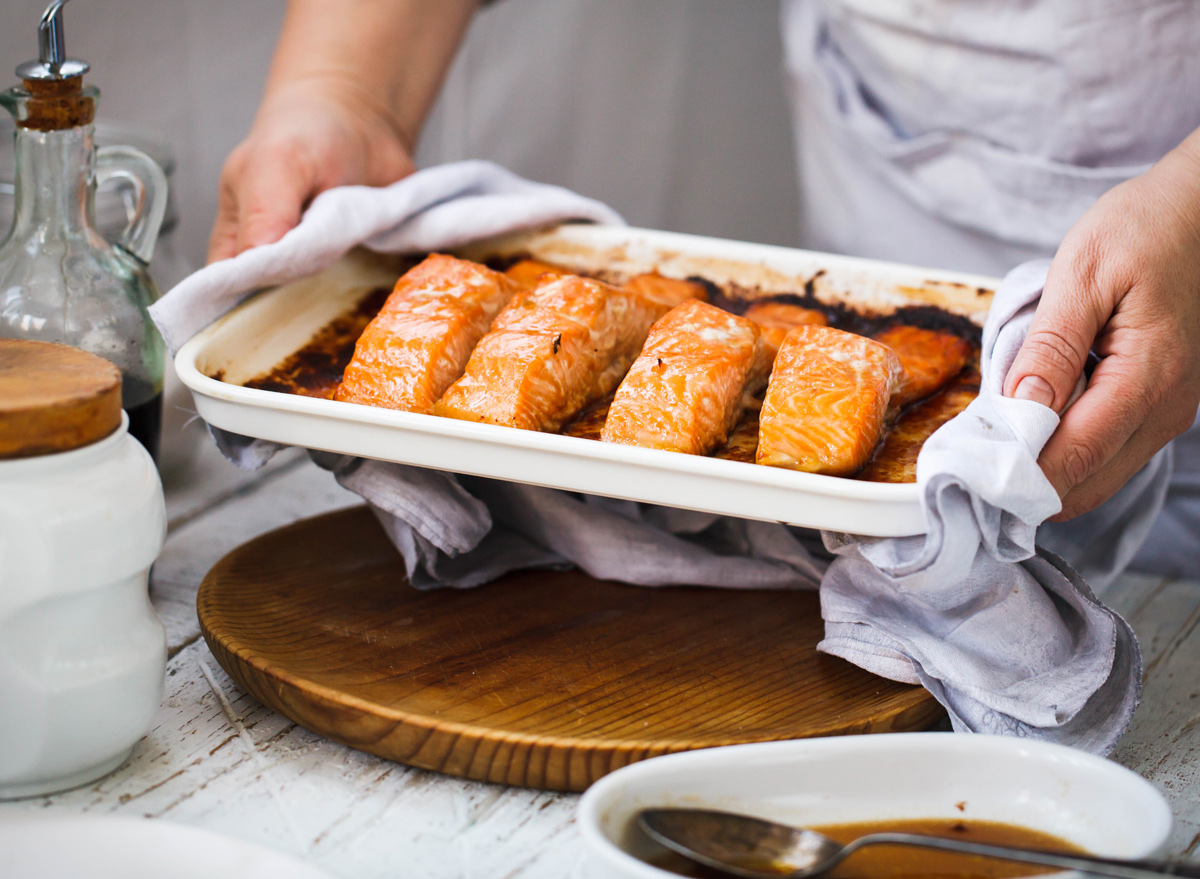
"If you've got a lot of people to feed, don't try to grill a bunch of pieces of fish together at the same time," Vine says. "You'll have a really hard time getting them all cooked properly."
Unless he's serving a whole fish family-style, Vine prefers to pre-sear each portion and then finish them in the oven when he cooks for a whole crew.
"This allows me to control the doneness and timing better. If I've got a couple of pieces that are thinner than the rest, I'll barely sear them at all so that they won't overcook by the time the thicker pieces are done," Vine says.
Mistake: Throwing away the scraps.

Yes, we all want that perfect salmon fillet ultimately, but in our efforts to get it, we often ignore other delicious parts of the fish.
"So many people underutilize their fish! I've often seen people remove the skin, belly, and head of a fish and throw them away. This is a tragic mistake," Vine says. "The cheeks are perhaps the best part, and are often overlooked. Too much good food ends up in the garbage because people don't know how to use it."
And don't worry if you're one of those people; Vine has a solution. "Find a recipe for salmon rillettes and impress your friends, or save all the extra pieces to make a chowder or some salmon cakes!" he says. "This is a small thing that we can all do to respect our food and our planet."
Mistake: Avoiding salmon because you're not a "fish person."
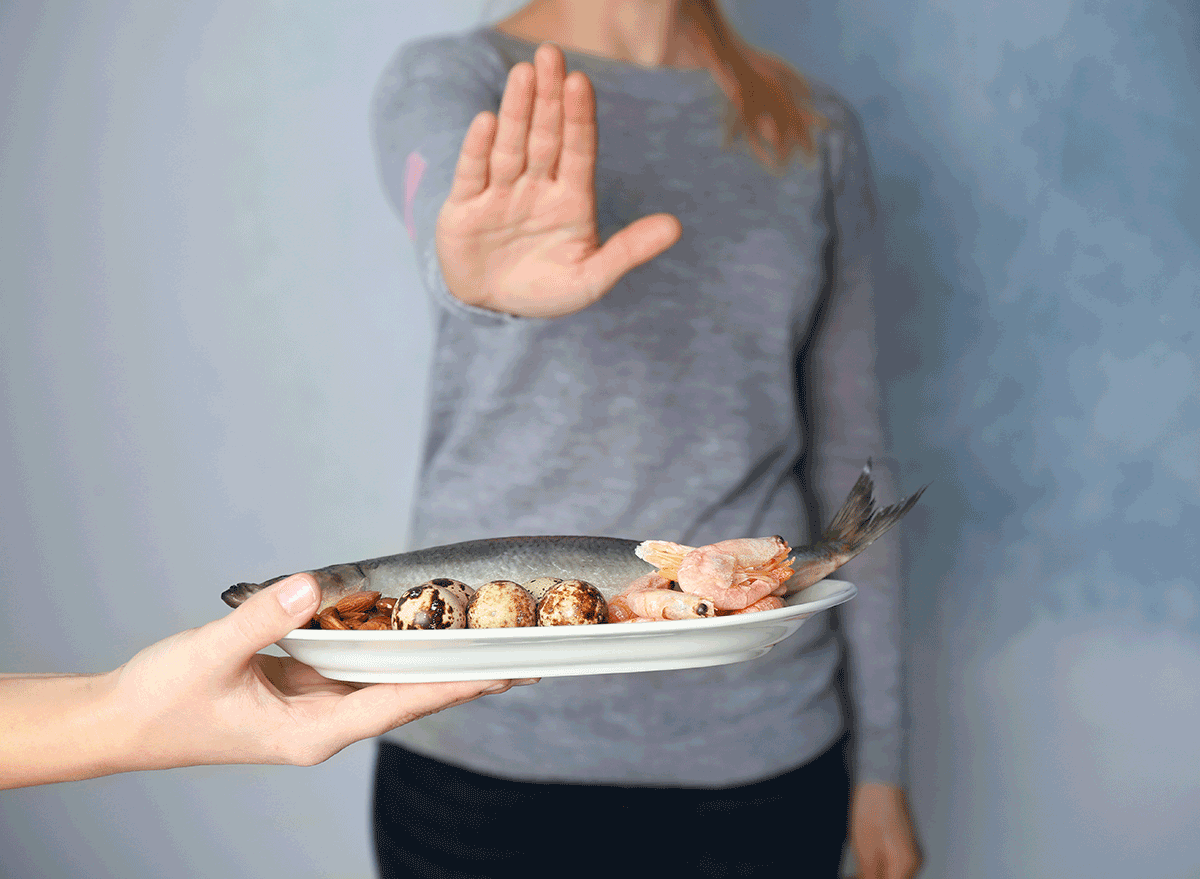
If you're always among the steak crowd when given the choice between steak or salmon at weddings, it's time to give this omega-3-rich fish another shot.
"Salmon is a great fish for anyone that may not love fish inherently," Nelson says. "It's such a versatile fish that you can add a great amount of flavor to and pair with almost anything."
From chili-glazed and Moroccan-spiced to roasted and grilled, don't leave salmon off your plate without trying to cook it a few different ways! You could just be using a recipe you don't particularly love, and it might not be the salmon at all. Find a plethora of salmon recipes to try, and you might stumble on a new favorite meal. Plus, once you fix all your salmon mistakes, you might actually find you love it!
